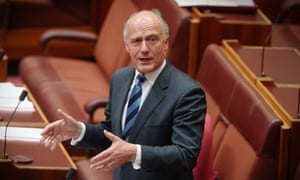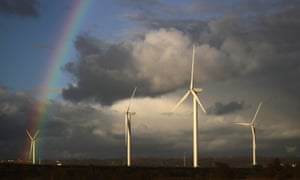There’s a million things to love about Hamilton, the musical that has opened in London to reviews as glowing as those that greeted its debut on Broadway. The lyrics are so ingenious, so intricate and dexterous, that the show’s creator, Lin-Manuel Miranda,
has a claim to be among the most exciting writers, in any medium, in
the world today. Rarely have I seen an audience delight in the tricks
and rhyming pyrotechnics of language the way I saw a preview audience
react to Hamilton a fortnight ago.
As I say, there are countless other pleasures. The staging is inventive, the melodies memorable and, by having black and minority ethnic actors play Alexander Hamilton and his fellow founding fathers, the musical instantly offers a powerful new take on America’s tragic, enduring flaw: race. But it was the idealism of the show – which venerates Hamilton and George Washington and unabashedly romanticises the revolution that birthed the United States of America – that struck a particular chord for me.
In 2018, it will be 20 years since I published a book called Bring Home the Revolution. Begun when I was still in my 20s, it too was an essay in idealism, arguing that the American uprising of 1776 and the constitution that followed in 1787 were a rebellion against a system of government under which we Britons still laboured two centuries later – albeit with an overmighty, overcentralised government in place of the bewigged King George.
The American revolution, I argued, was our inheritance, a part of our patrimony mislaid across the Atlantic. From a written constitution to a system of radically devolved power to the replacement of monarchy with an elected head of state, it was time for us to bring home the revolution that we had made in America.
With impeccable timing, my hymn of praise for the US constitution appeared a matter of months before what looked a lot like a US constitutional crisis, with the impeachment of Bill Clinton over perjury charges arising from his denials of a relationship with a White House intern, Monica Lewinsky. “So you want us to live the American dream?” one interviewer asked. “All a bit of nightmare now, isn’t it?”
As I say, there are countless other pleasures. The staging is inventive, the melodies memorable and, by having black and minority ethnic actors play Alexander Hamilton and his fellow founding fathers, the musical instantly offers a powerful new take on America’s tragic, enduring flaw: race. But it was the idealism of the show – which venerates Hamilton and George Washington and unabashedly romanticises the revolution that birthed the United States of America – that struck a particular chord for me.
In 2018, it will be 20 years since I published a book called Bring Home the Revolution. Begun when I was still in my 20s, it too was an essay in idealism, arguing that the American uprising of 1776 and the constitution that followed in 1787 were a rebellion against a system of government under which we Britons still laboured two centuries later – albeit with an overmighty, overcentralised government in place of the bewigged King George.
The American revolution, I argued, was our inheritance, a part of our patrimony mislaid across the Atlantic. From a written constitution to a system of radically devolved power to the replacement of monarchy with an elected head of state, it was time for us to bring home the revolution that we had made in America.
With impeccable timing, my hymn of praise for the US constitution appeared a matter of months before what looked a lot like a US constitutional crisis, with the impeachment of Bill Clinton over perjury charges arising from his denials of a relationship with a White House intern, Monica Lewinsky. “So you want us to live the American dream?” one interviewer asked. “All a bit of nightmare now, isn’t it?”
That, or something like it, has happened at intervals ever since. If it wasn’t a hideous, only-in-America mass shooting, it would be an election in which a man with fewer votes defeated an infinitely more qualified opponent who had won more.
Usually, I have managed to deflect these challenges, arguing that my book was a homage to a founding ideal, not to the necessarily flawed reality. But it’s time for me to admit my doubts about its core idea – its admiration for the US constitution and system of government. For this first year of the Donald Trump presidency has exposed two flaws in the model that I cannot brush aside so easily.
The first is that Trump has vividly demonstrated that much of what keeps a democracy intact is not enshrined in the written letter of a constitution, but resides instead in customs and conventions – norms – that are essential to civic wellbeing. Trump trampled all over those as a candidate – refusing to disclose his tax returns, for example – and has trampled over even more as president.
Convention dictated that he had to divest himself of private business concerns on taking office, to prevent a conflict of interest – but in the absence of a law explicitly forcing him to do so, he did no such thing. The same goes for appointing unqualified relatives to senior jobs, sacking the director of the FBI with no legitimate cause, or endorsing an accused child molester for the US Senate. No law told him he couldn’t, so he did.
I once thought the US constitution – a document crafted with almost mathematical precision, constructing a near-perfect equilibrium of checks and balances – offered protection against such perils. And there’s no denying that that text, as interpreted by the courts, has indeed acted as a partial roadblock in Trump’s path, delaying and diluting his Muslim-focused “travel ban”, for example.
But this year of Trump has also shown the extent to which the US has an unwritten constitution that – just like ours – relies on the self-restraint of the key political players, a self-restraint usually insisted upon by a free press. Yet when confronted with a leader unbound by any sense of shame – and shamelessness might just be Trump’s defining quality – America is left unexpectedly vulnerable.
Of course, there is a remedy, and its name is impeachment. Scholars are clear that Trump has already provided sufficient legal grounds for such a move – the case against him is far more compelling than the one against Bill Clinton. But impeachment proceedings are triggered by the House of Representatives, followed by a trial in the Senate, and nothing will happen so long as Republicans control both houses of Congress.
In 2017 we saw with new clarity that the strength of the US constitution depends entirely on the willingness of those charged with enforcing it to do their duty. And today’s Republicans refuse to fulfil that obligation. They, like Trump, are without shame. This was a fatal oversight by Hamilton, James Madison and their fellow framers of the constitution. They did not reckon on a partisanship so intense it would blind elected representatives to the national interest – so that they would, repeatedly, put party ahead of country. The founders did not conceive of a force like today’s Republican party, willing to indulge a president nakedly hostile to ideals Americans once held sacred.
My 1998 self asks me whether, say, the Westminster parliament would really be so different if confronted by a Trump-like would-be autocrat. Would individual MPs suppress their own revulsion and back him, fearing deselection by party activists if they did not – much as congressional Republicans won’t move against Trump lest they face the wrath of his base? It’s conceivable. And yet a parliamentary vote of no confidence is a lower hurdle than impeachment. Put simply, it would be easier to get rid of a British Trump.
And these weaknesses in the US model have prompted me to see others. The second amendment does not compel Americans to allow an unrestricted flow of guns into the hands of the violent and dangerous, but the fact that the argument hinges on interpretations of a text written more than two centuries ago is itself a problem. It means America, in the words of that great revolutionary Thomas Paine, is too often “like dead and living bodies chained together”, today’s generation shackled to the words of their ancestors.
And yet, despite everything, I still see so much to admire in the founding achievement of America. The society remains innovative, restless and creative: it’s still capable of producing a work of genius like Hamilton. But its next act of renewal might be to update or amend the text that gave it birth, to declare that no human invention, no matter how great, can remain stuck. Were he around, I suspect that “bastard, orphan, son of a whore and a Scotsman” would agree.
• Jonathan Freedland is a Guardian correspondent











